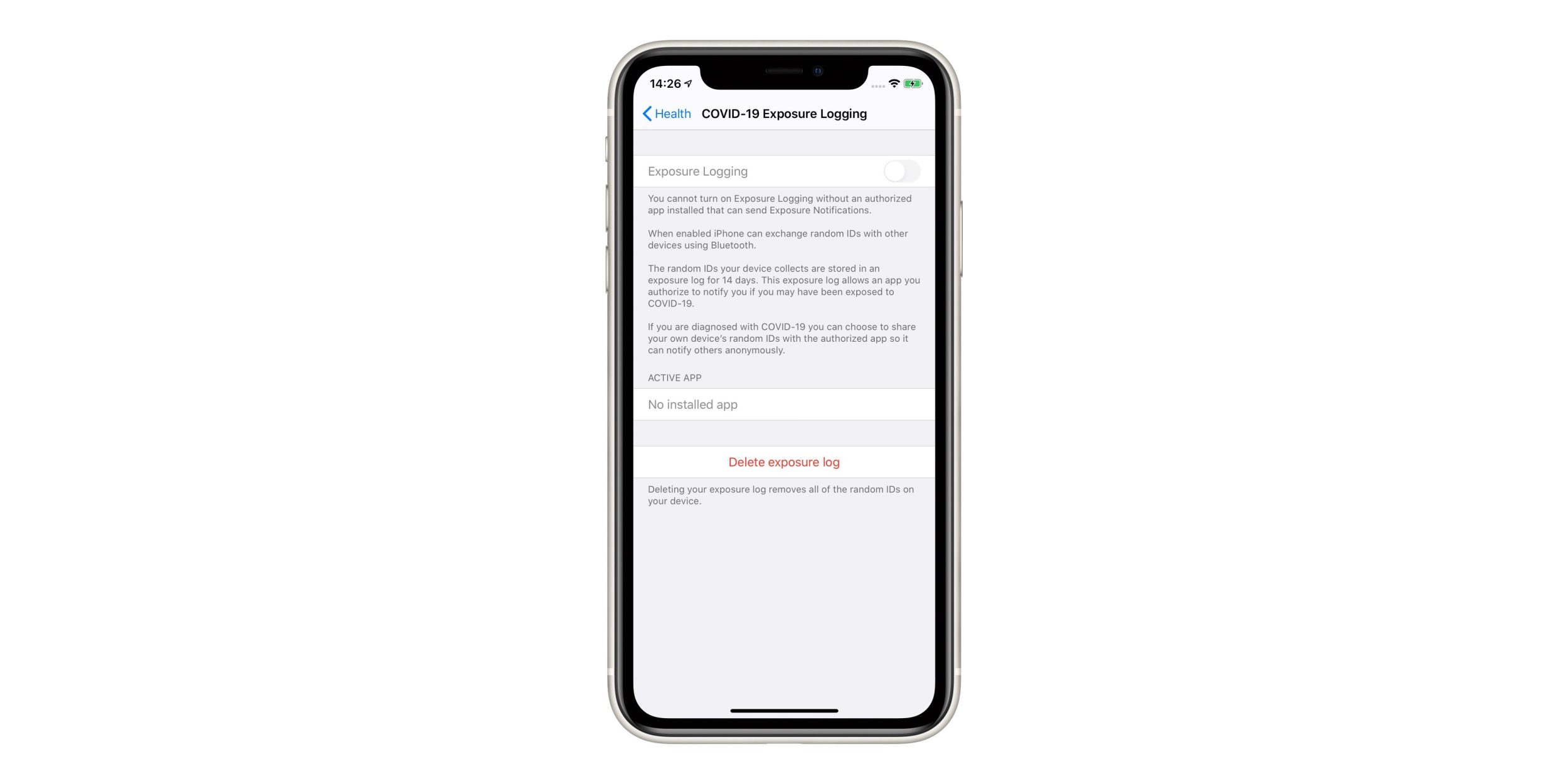
On Wednesday, Apple seeded the fourth beta of iOS 13.5 to developers, and the company has made a change to the opt-in page for its upcoming exposure notification system.
Apple’s iOS 13.5 is meant to lay the groundwork for developers to build apps that support Apple’s and Google‘s new exposure notification system, a new API that’s meant to help combat the spread of the coronavirus and COVID-19, the disease it causes. Now, with the latest pre-release software, Apple has made a change to the opt-in page within the Settings app, making things a bit more clear for the end user.
Previously, the opt-in page simply offered a single toggle for turning it off and on, and, by default, it was switched on. As noted today by 9to5Mac, that led to some confusion as to why the feature was switched on automatically, especially considering there aren’t any apps to take advantage of the new exposure notification system (yet). The new page makes it possible to manage installed applications, as well as delete exposure logs.
Here’s how Apple describes it:
You cannot turn on Exposure Logging without an authorized app installed that can send Exposure Notifications. When enabled iPhone can exchange random IDs with other devices using Bluetooth.
The random IDs your device collects are stored in an exposure log for 14 days. This exposure log allows an app you authorize to notify you if you may have been exposed to COVID-19.
If you are diagnosed with COVID-19 you can choose to share your own device’s random IDs with the authorized app so it can notify others anonymously.
Clarity is never a bad thing, and Apple continues to tweak this new system in an effort to make everything just about as clear as possible for the user before it officially launches to the public.
Do you plan on using the upcoming exposure notification system when it does launch? Let us know in the comments below.